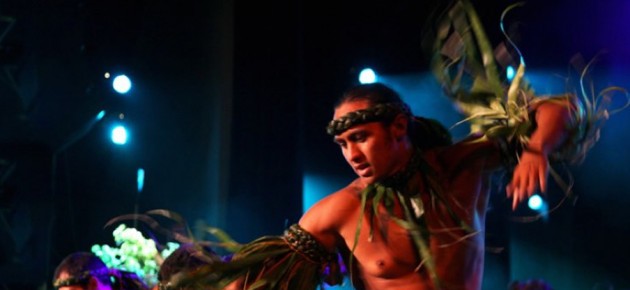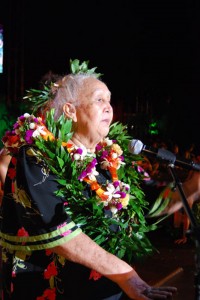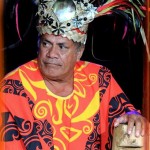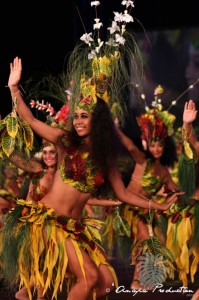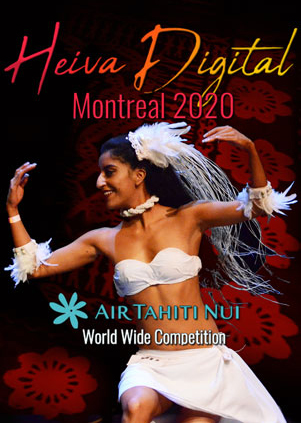Teachings
It is my goal to instruct students in the same manner from which I was taught and from the lessons I have received from the individuals who have answered my perpetual interrogations since the start of my dancing career in 1983. I received my original dance instruction from Louise Kimitete during my years at the Conservatoire and also from friends and acquaintances away from the Conservatoire with whom I danced from 1984 to 2002. I am referring to Tamaeva, directed by Coco Hotahota and choreographed by Pailine Dexter and Heikura Nui, directed by Iriti Hoto and choreographed by Louise Kimitete and Jasmina Lepean.
With Mamie Louise, I learned the essentials of Tahitian dance plus much more by constantly asking questions about dance technique and the spiritual dimensions of dance moves. I also became aware of the process of re-appropriateness, which is the true foundation of today’s Tahitian dance, and the reality of Ori Tahiti, aside from common misconceptions.
Mamie Louise began teaching at a very young age when dancing was considered blasphemous, before the entrance of Madeleine Mou’a into the dancing scene. At that time, it was not customary to dance with the feet close together and nobody was considering the idea of demanding dancers to keep their heels stuck to the ground.
At the age of sixteen Mamie Louise joined the dance group of Madeleine Mou’a and later found herself first in Canada then in Hawaii where her passion for dancing led to her becoming kumu hula. Events in her life eventually led to her returning to Fenua where she began teaching Hula dance as well as Ori Tahiti. Mamie Louise later joined Paulina’s group, Tiare Tahiti. Finally, she joined the Conservatoire, where she is still in charge of the traditional art courses today.
It is because of Mamie Louis’s approach and research on dance movements that students of the Conservatoire are able to reach exceptional levels in the field of dance. Thanks to her work, the process of dance re-appropriateness has been greatly extended.
Working alongside Heikura Nui has allowed me to be immersed in music. Iriti Hoto is incontestably considered as a master of the Polynesian percussions.In Heikura Nui, choreography is built in accordance to music. This is a method that is not utilized within all groups. With Iriti, I learned rhythm as a religion, its mathematical applications, and the necessary relationship between rhythm, dance moves, steps, and gestures.
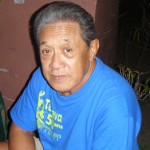 With Temaeva, I learned the true meaning of dance and its placement within Polynesian society, culture, and basic life, specifically, the close relationship between words and gestures. With Pauline Dexter, in her lifetime, and Coco Hotahota, choreographies were created using only text rather than music. Even the aparimas were created before the compositional aspect of the music was finished. In Temaeva, texts and literature were given priority over the actual dance movements.
With Temaeva, I learned the true meaning of dance and its placement within Polynesian society, culture, and basic life, specifically, the close relationship between words and gestures. With Pauline Dexter, in her lifetime, and Coco Hotahota, choreographies were created using only text rather than music. Even the aparimas were created before the compositional aspect of the music was finished. In Temaeva, texts and literature were given priority over the actual dance movements.
This is the meaning of a dance show when viewed as a religion, which is sometimes kitsch, but never flashy in contrast. This is a method in opposition to those of Heikura Nui.
Coco Hotahota began dancing during Madeleine Mou’a’s prime, joining her dance group along with Iriti Hoto.
Along with these three main Polynesian educational tracts, I must add the classic dance education that I received during my youth in Papeete, which involved some outstanding teachers, then in Paris during my higher education.
Classic dance allowed me to learn body position as a religion, which left me eager to understand and analyze dance movements.
In addition to this, I learned the absolute necessity of being aware of one’s body and properly caring for the body while executing dance movements. My work with the physiotherapist Jean Marie and osteopath Gregory Thirouard allowed me to complete and fine tune my approach to dance movement.
Genealogy of Instruction

Photo by Guy Laurens, the French Polynesia Conservatoire, Lucien Pesquié







